The Yakuza/Like a Dragon series is regarded for its serious and emotional moments about as often as its over-the-top story beats, and Infinite Wealth is certainly no different. Having recently completed the main story of this latest entry, its pitfalls and triumphs are fresh in my mind. While I can confidently state that Infinite Wealth is not one of my personal highlights of the series, I did (mostly) enjoy it, and I’d like to discuss why (and why not.)
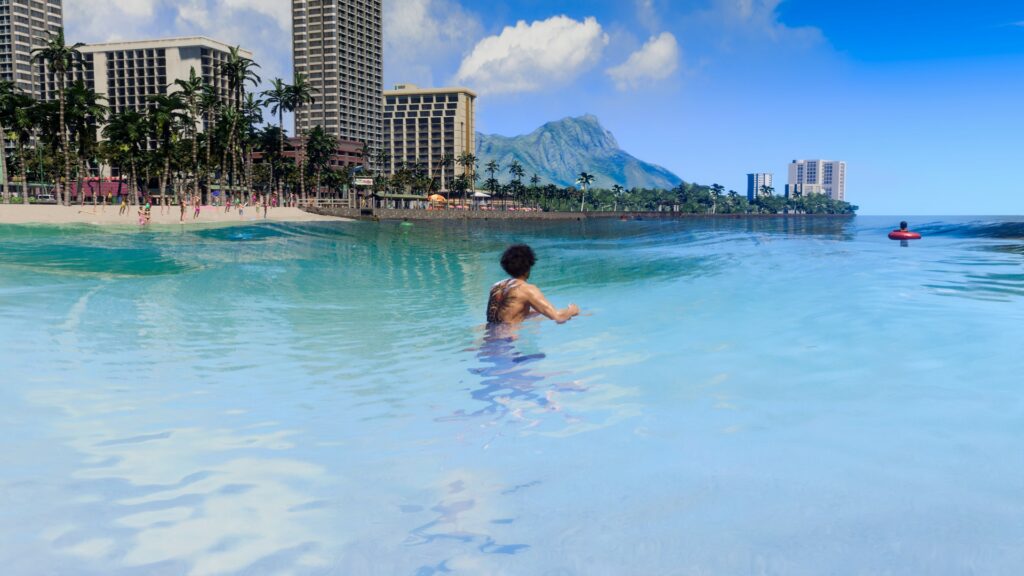
So Many Things To Do
Infinite Wealth takes Ichiban and friends to Hawaii, sent there by former Arakawa Family Captain Sawashiro under the pretense of locating his mother. Of course, in typical Ichiban fashion, hilarity ensues and soon after arriving in America he finds himself in the middle of a much larger plot. The first thing players will probably notice is that the map in Hawaii is huge. Strewn across that map are lots of places to go and substories to complete, enemies to defeat.
In a lot of ways Infinite Wealth feels like an improvement from the last entry, which first introduced Ichiban as both a new protagonist and lovable doofus. It’s got improved turn-based combat, improvements to the jobs system in addition to new Hawaii-themed jobs, an assortment of minigames, a new Sujimon adventure, the return of Drink Links and party bonding… and that’s before getting into the new stuff.
In chapter 8 of the game’s main story, Ichiban and Kiryu split off into their own groups – with Ichiban staying in Hawaii and Kiryu returning to Japan with a party of his own. While this unlocks more content in the form of Kiryu’s Bucket List and Life Links (more on these later), it also introduces more party members to level up and equipment to manage. While party management itself isn’t new, the introduction of a second protagonist increases the number of active party members players will need to keep track of. I love party management, and luckily Infinite Wealth added two dungeons – one in Hawaii for Ichiban’s party and the other in Japan for Kiryu’s – that assist with leveling and gearing up your team. The dungeons are organized by floors until you reach the main boss at the end, and each level can be completed as many times as needed, so players can test out and level up several different jobs. After completing each dungeon for the first time, you’ll be rewarded with a unique piece of gear for Kiryu and Ichiban.
There’s so much to do in the game that I didn’t get to all of it, like the Sujimon story or even completing Dondoko Island – Infinite Wealth’s business minigame/substory that feels like a self-contained game. I started Dondoko Island in the middle of the game’s main story but, thinking back, should have left it until I had completed the game. At Dondoko Island, Ichiban finds himself managing a once-great island resort as he works to restore it to its former glory. Ichiban’s job is initially to craft buildings and decorations to furnish the island with, invite guests and manage their happiness, and fight off pirates. As the island gains popularity, Ichiban’s duties expand and soon he’s managing other aspects like farming and gardening. It’s a lot, and feels very Animal Crossing-inspired. Which isn’t necessarily a bad thing, it’s just a ton of extra content that is completely separate from the main story, and I was burnt out by the time I completed the game.

Kiryu’s Bucket List and Life Links
Kiryu returns as a main character in Infinite Wealth after his minor but impactful role in the previous game. After chapter 8, Kiryu returns to Japan from Hawaii and the story diverges from that point onward. While Ichiban’s story is bright and tropical, Kiryu’s part is all about reflecting on the past and coming to terms with past choices. Kiryu’s Bucket List and Life Link events are unlocked as special Kiryu-only content, as they pertain to his personal story and growth, and the story becomes more somber. More on the story in the next section, but basically Kiryu – main character of every series entry from the original Yakuza to Yakuza 6, plus Like a Dragon Gaiden – is a man staring down the finale of his life. He doesn’t know when it’ll happen, but he’s encouraged by Nanba and Date to tie up loose ends and make the most of what he’s got left. The dramatic shift in tone that accompanies Kiryu’s remaining sections of the game are mostly heartbreaking, even though the game tries to paint it in a positive-ish light.
The Bucket List is a series of optional objectives for Kiryu to complete that grant him skill points in three areas: Tech, Soul, and Body. These objectives can range from visiting locations that Kiryu holds lots of nostalgia for, like Serena in Kamurocho, to protect innocents from thugs on the streets. I enjoyed the aspect of the Bucket List that was like a walk down memory lane, with Kiryu remembering important events from throughout his life and adding some commentary.
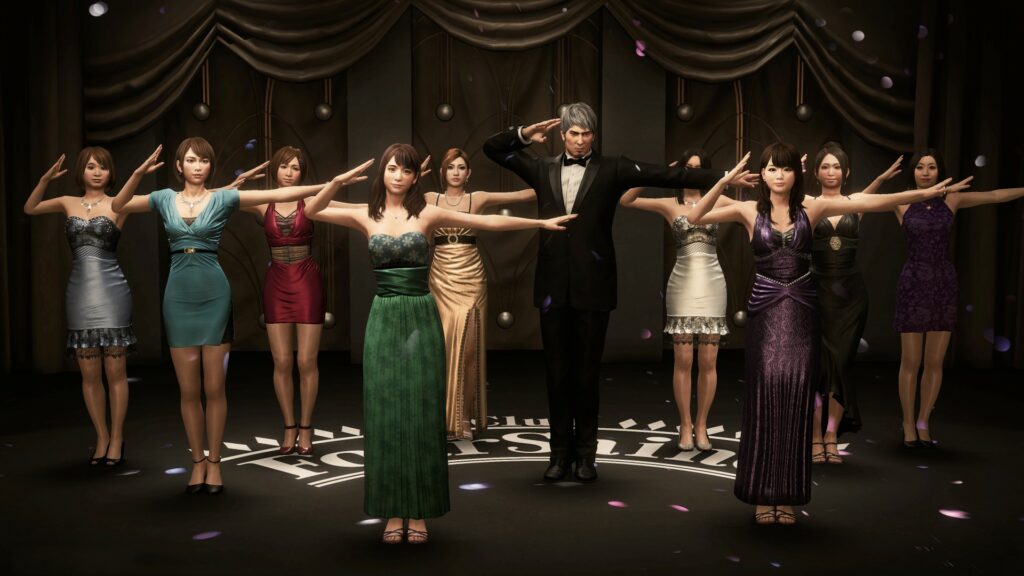
As Kiryu completes Bucket List objectives and levels up, he’ll unlock Life Link events with Date. I’m very happy Date was in Infinite Wealth, and that he played an important part in helping ensure Kiryu knows he has a lot to continue fighting to live for Date has been with Kiryu since the beginning, and it’s fitting that he’d help him out when he really needs support. Since the Daidoji are still controlling Kiryu’s ability to live freely as a public citizen – after Kiryu made a deal with them to fake his own death to protect his family at the end of Yakuza 6 – Date comes up with a plan that will allow Kiryu to indirectly check in on his loved ones. Seeing these characters again, like Taichi and Sayama, was pretty cool, but also undoubtedly sad since Kiryu refused to reveal himself to them. The Life Links culminated in Date admitting Kiryu is his best friend and, while we all already knew that, him actually saying so was probably the best part about the Life Links.
A Story That Overreaches and Underdelivers
Anime and soap opera drama are staples in Yakuza’s mostly convoluted storylines, and Infinite Wealth is definitely no exception. While I find the dramatic anime stories endearing and entertaining – touching on some great emotional themes at times – I found that the story in this latest entry couldn’t figure out what it wanted to be. A big part of the game was about handling Kiryu’s cancer diagnosis, which is revealed to Ichiban and team after the story is pretty well established in Hawaii. From then on, the sadness of that news hung over the group (and me) like a cloud, which discolored the game’s otherwise bright and beautiful setting. Since the game starts switching between the two protagonists after chapter 8, the story feels disjointed and sort of like Kiryu’s retirement was shoehorned in.
The question of Kiryu’s retirement from Yakuza main character/protagonist has been toyed with and teased since Yakuza 4, which was the first game in the series to introduce playable characters other than Kiryu. The fact is that it’s never been easy for RGG Studios to remove Kiryu from their games altogether since he has such a presence and players expect to see him. What’s more is that removing him altogether will most likely upset a large portion of players which might result in a decrease of sales. Hence, Ichiban was introduced in Yakuza 7 to introduce players to a new lovable main character while Kiryu is still involved but takes a back seat, helping to ease the transition.
Kiryu
Yakuza has left a lasting impact on me as a player and while it’s one of my favorite series, I found it hard to enjoy Infinite Wealth as the game clumsily tried to retire Kiryu yet again. Nothing conclusive happens even during the ending of the game. Kiryu, while lacking strength and obviously sick, is still alive and finally starts to receive treatment. We don’t actually see a reunion with Haruka and Haruto – Kiryu’s adopted daughter and grandson, respectively – but one of the last scenes features Haruka talking about how she’s going to see him in the hospital. So, if the plan is to just kill him off between Infinite Wealth and its eventual sequel, what was the point of stringing the player along for the whole game? And if it turns out he survives and recovers, what was the point of the Bucket List and Life Links – or, again, making the player sad? It seems to me that RGG can’t decide what they want to do with Kiryu, and I think that unfortunately they wrote themselves into a corner during Yakuza 6 and the introduction of the Daidoji Faction.
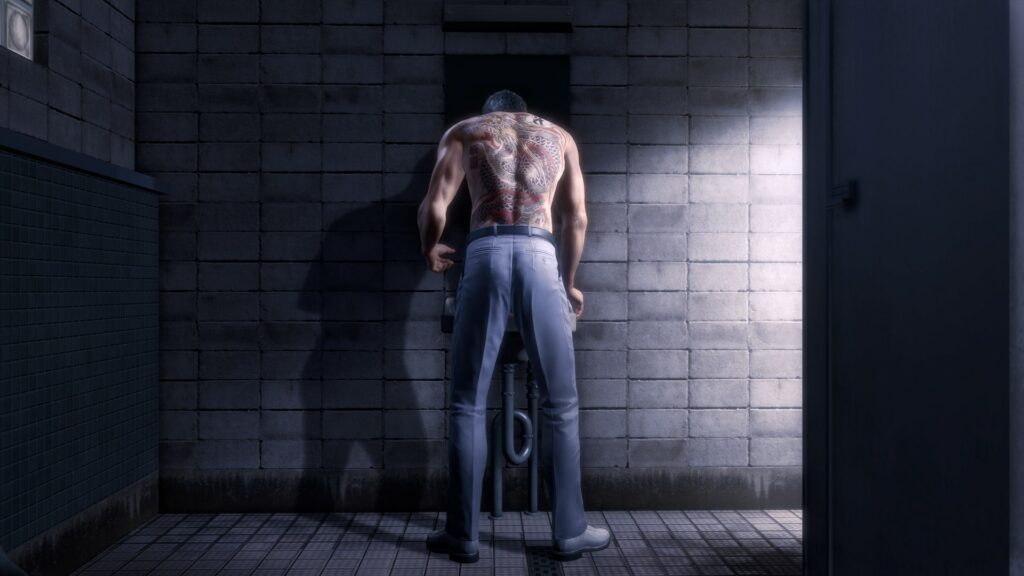
The Daidoji are introduced as a mysterious organization that operates in the shadows in order to protect the Japanese government. They are central to Yakuza 6’s plot yet rarely discussed directly. Over the course of 6, Kiryu uncovers a government secret that could be dangerous if it got out, so the Daidoji approach him to make a deal that will ensure his silence. Kiryu takes this a step further and essentially pledges his life to the Daidoji who will, in return, help him fake his own death so that his family will be safe. How does any of that make sense, you might ask. Well, it doesn’t, and it’s unfortunately the start of several issues.
I was hoping that Infinite Wealth would give more information about who the Daidoji are and what their role is, but they remain mysterious and disconnected. Hanawa, Kiryu’s Daidoji handler, had an interesting relationship with Kiryu but he was killed. The constraints they placed on Kiryu – not revealing his identity to anyone – was silly, because Kiryu ended up telling many people over the course of the game who he was. Others simply recognized his face, which the Daidoji went through exactly zero effort to disguise. The constant struggle with Kiryu sometimes adhering to the Daidoji’s rules in a very stubborn way versus disregarding them was frustrating, not to mention that the Daidoji knew the whole time when he wasn’t obeying. The whole idea of faking your own death doesn’t really work so well when you don’t change anything about yourself and don’t attempt to hide.
The other major piece that upset me was the explanation of how Kiryu got cancer – it’s handwaved away by Kiryu mentioning he spent some time in a nuclear waste facility, and never brought up again. There’s much less tragic ways to retire a beloved character – he even could have died defending Ichiban in the final battle if RGG really wanted to get rid of him. Instead, his possible death was looming over the entire game, and he lived through the whole thing anyways.
Ichiban
Due to Kiryu’s sad storylines and the Daidoji overshadowing Ichiban, I have comparatively less to say about him. Which is unfortunate, because I love Ichiban as a character, and Yakuza 7 did such a great job introducing him. Overall, I enjoyed Yakuza 7 more because it didn’t try to fit two protagonists with different stories into one game, and allowed Ichiban to take center stage. While the plot with the Hawaiian religious group, Palekana, contained some cartoon-level evil with their leader aiming to take control of the world’s governments, I think I could have excused it if that was all there was. Yakuza is, after all, dramatic and larger than life. For the story hook being all about heading to Hawaii to reunite with Ichiban’s mother who he thought dead, the game spent very little time on them once he found her. And oh boy, that romance with Saeko really is something…

A core characteristic of Ichiban is how he often thinks with his heart rather than his head, which sort of mirrors how Kiryu punches first and asks questions later. I enjoy that aspect of both of their characters, but even so, I found the “romance” with Saeko to be rushed. The beginning of Infinite Wealth shows that Ichiban has had feelings for Saeko for a while, which leads to him gathering the courage to ask her on a date. Everything seems to be going well – awkward, but that’s understandable – until Ichiban blurts out a marriage proposal. While this is on brand for him, Saeko is understandably shaken by the ordeal, which leads to them being separated for practically the whole game. It’s only at the very ending that the two reconcile and seem to start a relationship, but it’s left unclear. I thought the added drama between the two of them was unnecessary and divided the main friend group – Adachi, Nanba, and Saeko – on top of the fact that the lead up to any sort of romance between them was underdeveloped.
Final Thoughts
Infinite Wealth was a bright, colorful adventure with themes about valuing close friendships and support systems, which I believe to be the “infinite wealth” alluded to in the title. Unfortunately, this fun international vacation was set against a backdrop of Kiryu’s failing health, which makes the story seem confusing and incohesive. While I thought the last entry, Yakuza: Like a Dragon, was a slam dunk, this one was just ok. In terms of gameplay and things to do it was a definite improvement, however. I hope that RGG feels less pressured to retire Kiryu in future games and allows him to still be present but take a backseat, while developing Ichiban’s character more.
A big part of the reason why I enjoyed the last game so much is because players were introduced to a new character who, while alike in some ways, is a very different person from Kiryu. Infinite Wealth spent less time on Ichiban as the story flip-flopped between the two. Overall, I am looking forward to the next game, while remaining wary of an overloaded scope.
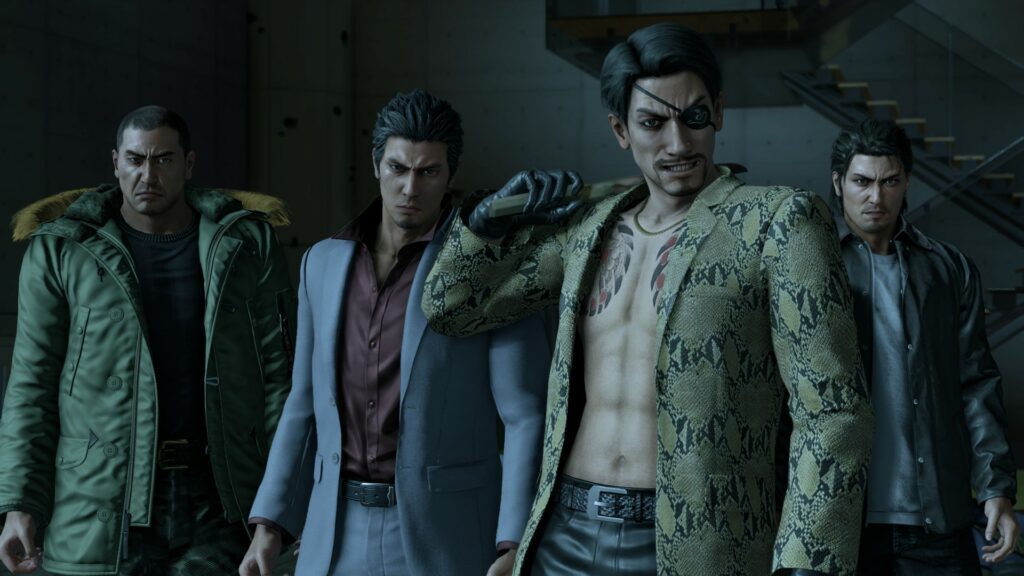
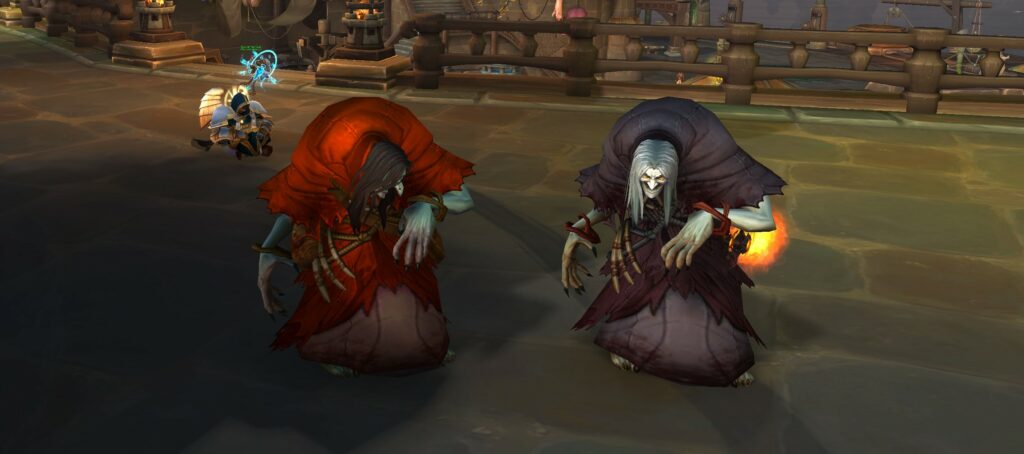
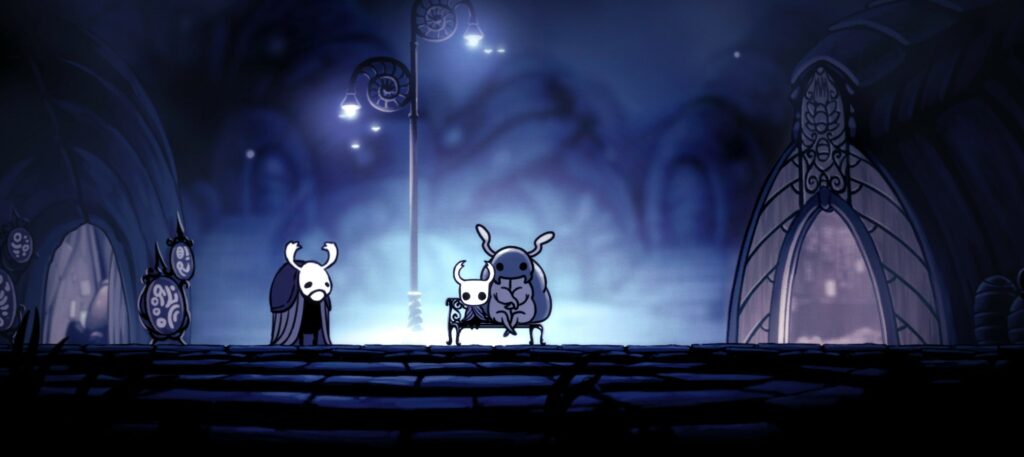

1 thought on “The Real Infinite Wealth is the Friends Made Along the Way”